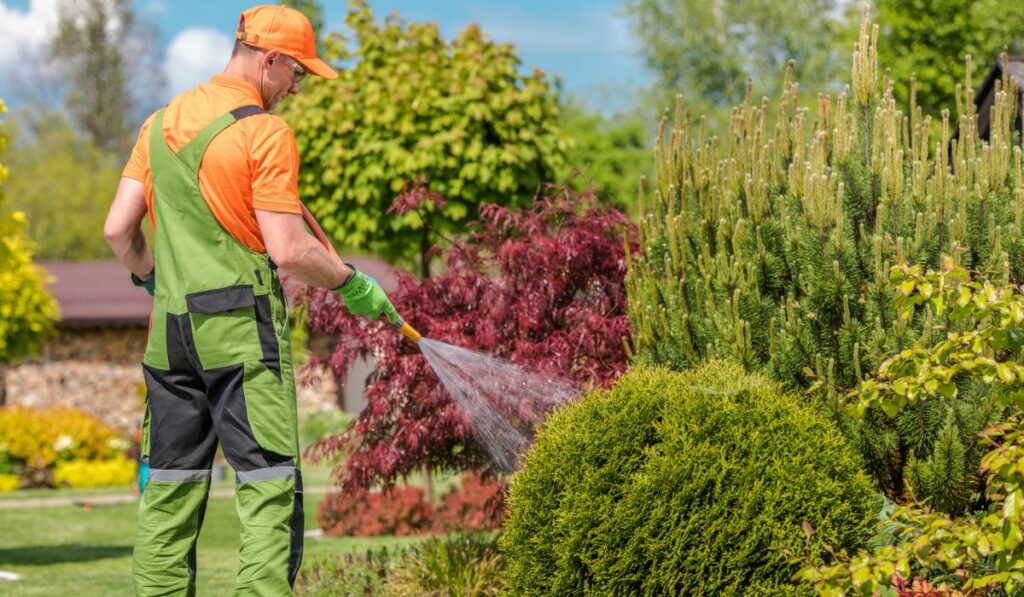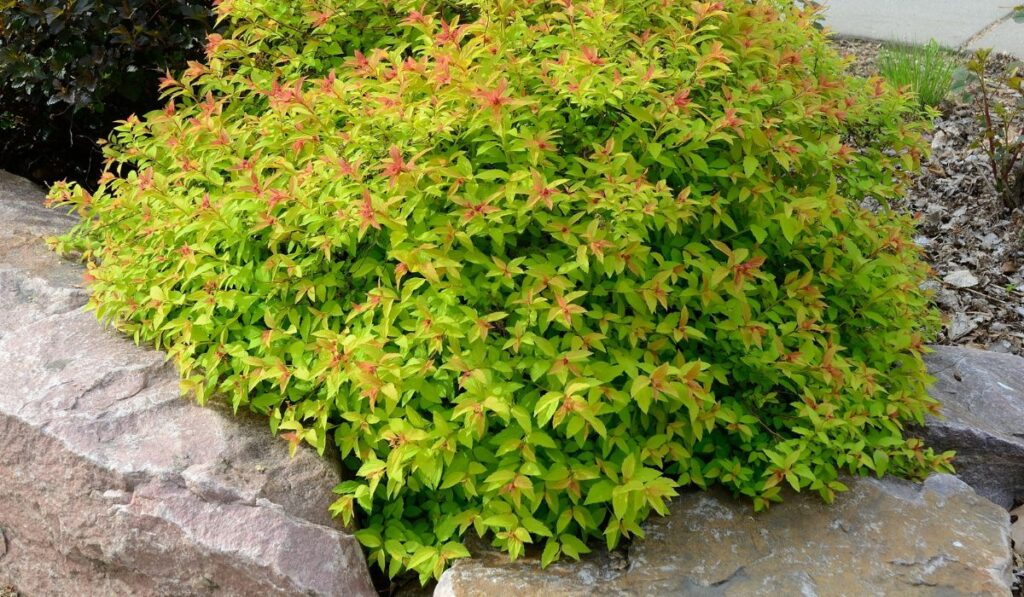Shrubs are undisputedly one of the best choices for landscaping. They’re easy to grow, require little maintenance, and come in various shapes, sizes, and colors. But even the most low-maintenance plants need a little TLC from time to time —including regular watering. So, how often should you water your shrubs?
Most shrubs need watering once a week, though some may need more or less depending on the plant, the climate, and the time of year. The best way to determine how often to water your shrubs is to check the soil before watering. If the top few inches are dry, it’s time to give the plants a drink.
Consistent and correct watering practices help the plants develop strong roots, healthy leaves, and beautiful blooms. These, in turn, help your shrubs better withstand pests, diseases, and extreme weather conditions. So let’s find out how much water shrubs need and how to tell when they’re over- or under-watered.
How Often Should You Water Shrubs?

In general, most shrubs need to be watered about once a week. But there’s no hard and fast rule — some shrubs may need more frequent watering, while others may need less. It all depends on the type of shrub, the climate, and the time of year.
For example, drought-tolerant shrubs like cacti and succulents can often go several weeks without water, while delicate plants like azaleas and camellias may need to be watered every few days. Plants exposed to full sun all day need more frequent watering than those in partial sun or shade.
Mature plants have established root systems that can draw water from deep in the soil and better tolerate periods of drought. On the other hand, young plants have shallow roots and need more frequent watering to prevent them from drying out.
Sandy soil drains quickly and doesn’t hold moisture well; if your garden has sandy soil, it will require more frequent watering. Similarly, if your shrub is in a pot or other container, it will need to be watered more often because the roots are confined and can’t access moisture from the ground.
Most shrubs require more water during spring and summer when they’re actively growing and producing new leaves, flowers, and branches. They will need less water when they’re dormant during the fall and winter. And, lastly, the rain is a big factor. If you get rain every week or at least once in ten days, your shrubs will probably survive without any supplemental watering from you.
How Much Water Do Shrubs Need?
For shrubs, the rule is to water more but less often. In other words, when you water your shrubs, give them a deep drink so the water can reach the roots.
A good rule of thumb is to provide 2 inches of water per week, either from rainfall or irrigation. This means anywhere from 3 to 7 gallons per application for a single plant, depending on the pot size or container.
However, soil condition is the best indicator of how much water your particular shrub needs. If the soil is sandy and well-drained, the plant will need more water. If the soil is heavy and clay-like, it will need less.
A good way to tell is to poke a stick into the ground about 5-6 inches — if it goes in easily, the soil is moist enough. If not, it’s time to water.
Use a slow soaker hose (on Amazon) or drip irrigation (also on Amazon) so that most of the water actually soaks into the ground instead of running off. Water enough so that the moisture penetrates at least 12 inches down. But don’t go overboard; overwatering is just as bad as under-watering.
How to Tell When a Shrub Is Over/Underwatered

Both overwatering and under-watering can stress shrubs and make them more susceptible to disease. Some telltale signs can help you differentiate between the two.
Signs of Overwatering:
- Wilted, yellow, drooping leaves: Indicate that plant is not getting enough oxygen
- Soggy or waterlogged soil: Clear sign of overwatering
- Black or brown slimy roots: Root rot is a common problem caused by overwatering
- Falling leaves: Sign of severe water stress
- Swelled stems and leaves: Happens when a plant can’t evaporate water fast enough
Signs of Under-Watering:
- Brown tips on leaves: Caused by lack of moisture
- Yellow curled leaves: An early sign, usually starts near the bottom of the plant
- Wilted leaves: Indication of drought stress
- Dry, crumbly soil: Soil should be moist, not bone dry
- Stunted growth: Long drought stress can lead to stunted growth
Tips and Tricks for Watering Shrubs
Here are a few tips and tricks to help you water your shrubs effectively:
- Newly planted shrubs need frequent watering (every two to three days), so water them even if other shrubs in the area don’t seem to need it. Once they are established, you can back off to once a week or so.
- Water more frequently in growing months (spring and summer), then slowly taper off as the plant enters its dormant phase (fall and winter). Give your shrubs a deep watering just before the first frost so the soil has a chance to absorb moisture before the ground freezes.
- Always water slowly so the water has a chance to seep down to the roots without running off. If possible, use a soaker hose or drip irrigation system to deliver water directly to the roots without wetting the leaves.
- Add organic matter (compost, bark, etc.) to the soil to help improve drainage and water retention. Mulch around the plants to help reduce evaporation and keep the roots cooler. It also helps prevent weeds that compete for water.
- Create a watering basin around shrubs to help channel water directly to the roots.
- Water in the early morning or evening to minimize evaporation. Avoid overhead watering as much as possible, as this can promote fungal growth and leave the leaves susceptible to disease.
- Shrubs in containers will need watering more frequently as they dry out faster. Be sure to use a potting mix that drains well, and the pot has drainage holes.
- If you’re unsure how often to water, it’s better to under-water than to overwater. Shrubs are generally quite resilient and can survive periods of drought better than they can survive being waterlogged.





![How Often Do You Need To Water Sage? [+ Growing Tips] How Often Do You Need To Water Sage? [+ Growing Tips]](https://yourdiybackyard.com/wp-content/uploads/2022/09/Fresh-herbal-sage-in-a-plant-pot-in-the-garden-150x150.jpg)


